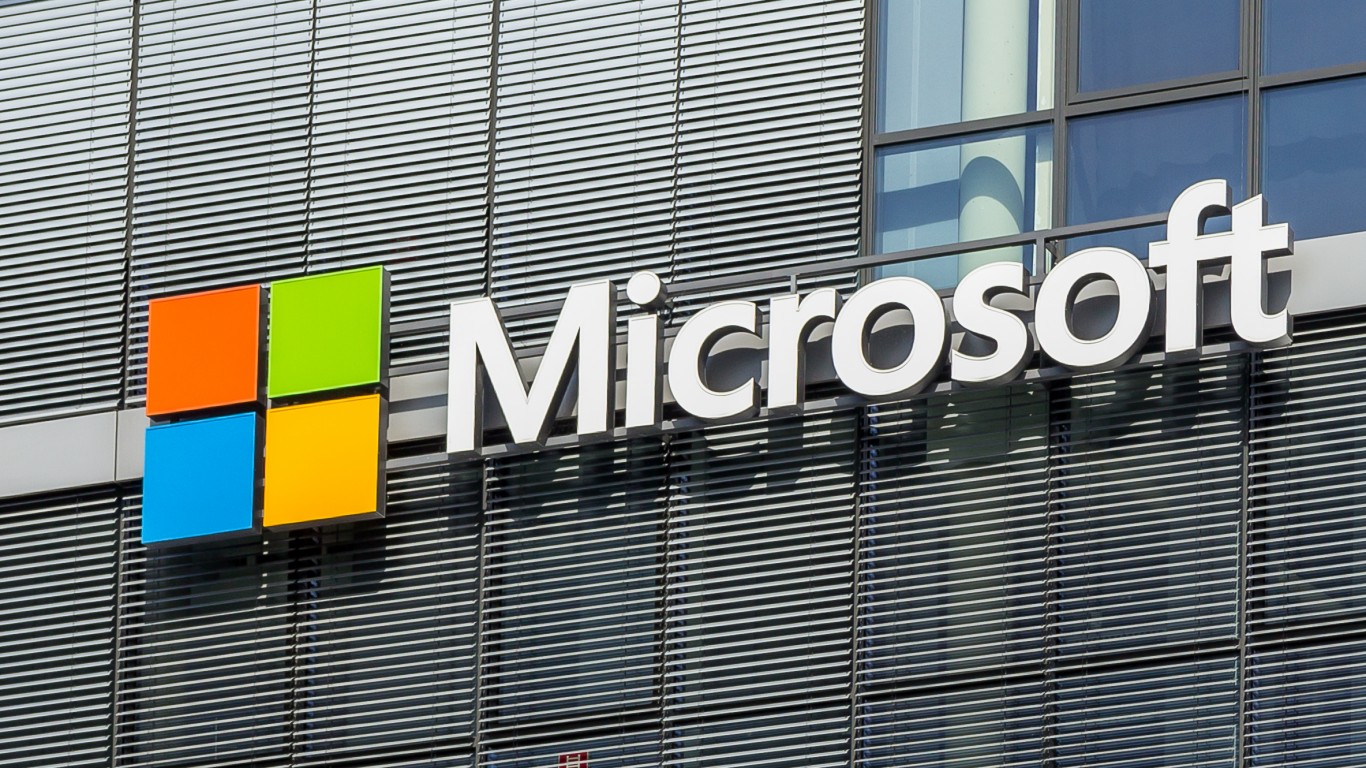Technology
Why Wall Street Has Such High Expectations for Microsoft Earnings and Guidance

Published:
Last Updated:

Microsoft Corp. (NASDAQ: MSFT) has again become the darling of the stock market. The Dow Jones industrial average component is the largest of all public companies, with a $1.06 trillion market cap, and its year-to-date gain in 2019 of over 36% currently has it in the running with Visa as the best-performing Dow stock of 2019.
Wall Street is gearing up for Microsoft’s fourth-quarter fiscal 2019 earnings report after the closing bell on Thursday, July 18. While much of the market can talk endlessly about valuations being stretched and can point out that many top companies can hide behind slowing global growth and China trade war risks, expectations remain high for Satya Nadella and team in Redmond.
The consensus forecast calls for $1.21 in earnings per share and $32.75 billion in revenues for the fourth quarter alone. That would compare to $1.13 EPS and $30.1 billion in revenues a year earlier. Refinitiv shows the coming quarter consensus estimates as $1.19 EPS on $32 billion in revenues, and fiscal year 2020 consensus estimates are $5.11 EPS and $138.7 billion in revenues.
Analysts have been talking up expectations for Microsoft shares ahead of earnings. The shares dipped from $130 at the start of May down to $120 or so as the “sell in May and go away” theme was strong, but Microsoft shares are now back above $138.75. That valued Microsoft at just over 27 times expected earnings for the entire next fiscal year.
With Microsoft still sitting on over $130 billion in cash and investments at the end of its most recent quarter, some investors are going to want to see Microsoft continue to chip away at that $72.5 billion in long-term debt while it keeps buying back stock (over $16 billion on buybacks in calendar year 2018 alone).
One huge potential score will be Microsoft wins the all-or-none JEDI $10 billion cloud deal with the Department of Defense. In some ways, Microsoft should be considered the only eligible company to handle the deal from a security aspect, but we are still talking about the government making a decision here.
in terms of Wall Street’s ratcheted up expectations, in July and June alone, Wells Fargo raised its target to $160 from $145, Cowen started coverage with a $150 target, Credit Suisse assigned a $145 target and Deutsche Bank raised its target to $155 from $145. In the past 48 hours, Nomura/Instinet raised its target price to $161 from $131.
Wedbush Securities issued a note on Monday (with a steadfast $155 price target) calling for Microsoft to post a solid beat across the board on both the top and bottom lines as cloud strength on Azure and Office 365 continue to be the fuel in the tank. They see Microsoft beating commercial cloud expectations by about 3% or more. Azure’s cloud momentum also was said to still be in its early days of playing out, Office 365 is providing growth tailwinds for the next 12 to 18 months at least and product initiatives are still playing out within its base of consumers and enterprises.
Merrill Lynch has maintained its $155 price objective, and in May it suggested that Azure could rise to nearly an $80 billion opportunity for Microsoft by 2025 (up from about $10 billion currently). It sees LinkedIn adding up to $7 billion or $8 billion in annual revenues by 2025 as well, considering its marketing solution. While Microsoft is expected to have its critical Xbox game consoles coming by 2020 to sustain the gaming community and developer interest, the firm views Xbox as becoming a less relevant growth driver for the next three to five years. All in all, Microsoft is shown to have a total addressable market of $500 billion in 2025 from five key growth engines and is only about 9% penetrated so far.
At $138.90 a share, Microsoft has a 52-week trading range of $93.63 to $139.54. Its consensus price target from Refinitiv was last seen at $144.25.
Thank you for reading! Have some feedback for us?
Contact the 24/7 Wall St. editorial team.